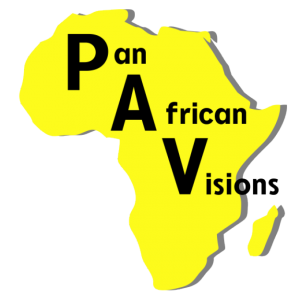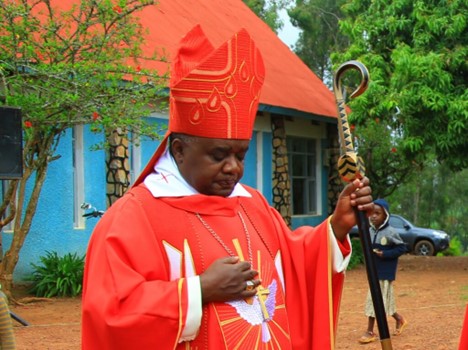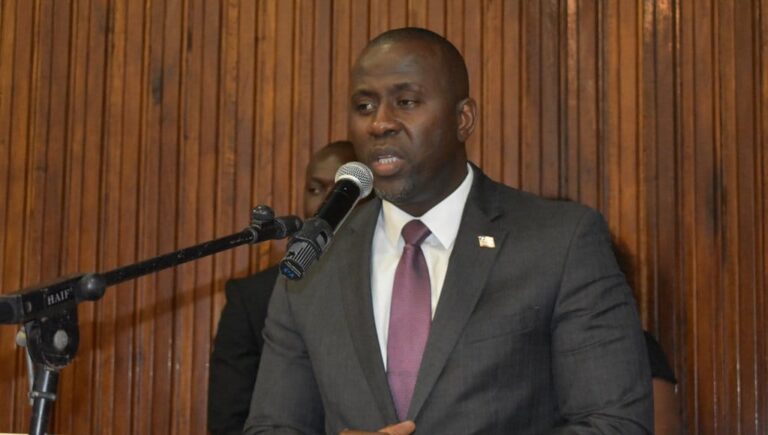Situation at a glance On 7 February 2023, the Ministry of Health and Social Welfare of Equatorial Guinea reported the deaths of a number of individuals with suspected hemorrhagic fever.
On 12 February 2023, one sample was confirmed positive for Marburg virus by real-time polymerase chain reaction (RT-PCR), at the Institute Pasteur in Dakar, Senegal.
Investigations are ongoing to find additional cases. WHO is supporting the response by strengthening contact tracing, case management, infection prevention and control, laboratory, risk communication and community engagement.
WHO assesses the risk posed by the outbreak as high at the national level, moderate at the regional level and low at the global level.
Description of the situationThis is the first Marburg virus disease (MVD) outbreak reported in Equatorial Guinea.
On 7 February 2023, the Ministry of Health and Social Welfare of Equatorial Guinea reported at least eight deaths that occurred between 7 January and 7 February 2023, in two villages located in the district of Nsock Nsomo, eastern province of Kie-Ntem, Río Muni Region. According to the ongoing epidemiological investigation, the cases presented with fever, followed by weakness, vomiting, and blood-stained diarrhoea; two cases also presented with skin lesions and otorrhagia (bleeding from the ear).
On 9 February 2023, eight blood samples were collected from contacts and sent to the Centre Interdisciplinaire de Recherches Médicales de Franceville (CIRMF) in Gabon, where they tested negative for both Ebola and Marburg viruses by real-time polymerase chain reaction (RT-PCR).
An additional eight blood samples were collected from other contacts and sent to the Institute Pasteur in Dakar, Senegal, on 12 February 2023. One of these samples was taken from a suspected case that was confirmed positive for Marburg virus by RT-PCR. This case presented with fever, non-bloody vomiting, bloody diarrhoea, and convulsions and died on 10 February 2023 at Ebebiyin District Hospital. The case also had epidemiological links to four deceased cases from one of the villages in Nsoc-Nsomo district.
As of 21 February 2023, the cumulative number of cases is nine, including one confirmed case, four probable cases and four suspected cases. All the cases have died, one in a health facility and the other eight in the community. There are no cases among healthcare workers. Thirty-four contacts are currently under follow-up.
Epidemiology of Marburg virus diseaseMarburg virus is the causative agent of Marburg virus disease (MVD), which has a case-fatality ratio of up to 88%. Marburg virus disease was initially detected in 1967 after simultaneous outbreaks in Marburg and Frankfurt in Germany, and in Belgrade, Serbia.
Rousettus aegyptiacus fruit bats are considered natural hosts for Marburg virus, from which the virus is then transmitted to people.
Marburg spreads through human-to-human transmission via direct contact (through broken skin or mucous membranes) with the blood, secretions, organs or other bodily fluids of infected people, and with surfaces and materials (e.g. bedding, clothing) contaminated with these fluids. Healthcare workers have previously been infected while treating patients with suspected or confirmed MVD. Burial ceremonies that involve direct contact with the body of the deceased can also contribute to the transmission of Marburg.
The incubation period varies from two to 21 days. Illness caused by Marburg virus begins abruptly, with high fever, severe headache and severe malaise. Severe watery diarrhoea, abdominal pain and cramping, nausea and vomiting can begin on the third day. Severe haemorrhagic manifestations appear between five and seven days from symptoms onset, and fatal cases usually have some form of bleeding, often from multiple areas. In fatal cases, death occurs most often between eight and nine days after symptom onset, usually preceded by severe blood loss and shock.
In the early course of the disease, the clinical diagnosis of MVD is difficult to distinguish from many other tropical febrile illnesses due to the similarities in the clinical symptoms. Other viral haemorrhagic fevers need to be excluded, including Ebola virus disease, as well as malaria, typhoid fever, leptospirosis, rickettsial infections, and plague. Laboratory confirmation can be made by different tests, such as antibody-capture enzyme-linked immunosorbent assay (ELISA), antigen-capture detection tests, serum neutralization test, reverse transcriptase polymerase chain reaction (RT-PCR) assay, electron microscopy, and virus isolation by cell culture.
Although no vaccines or antiviral treatments are approved to treat the virus, supportive care – rehydration with oral or intravenous fluids – and treatment of specific symptoms improve survival. A range of potential treatments are being evaluated, including blood products, immune therapies, and drug therapies.
This is the first time that Equatorial Guinea has reported an outbreak of MVD. The most recently reported outbreak of MVD was in Ghana in 2022 (three confirmed cases). Other MVD outbreaks have been previously reported in Guinea (2021), Uganda (2017, 2014, 2012, 2007), Angola (2004-2005), the Democratic Republic of the Congo (1998 and 2000), Kenya (1990, 1987, 1980) and South Africa (1975).
Public health response
- In-depth epidemiological investigations are underway to determine the source of the outbreak.
- National teams have been deployed to the affected districts for active case finding, contact tracing, isolating and providing medical care to cases.
- WHO has deployed experts in epidemiology, case management, infection prevention, laboratory and risk communication to support national response efforts and ensure community engagement.
- WHO is also facilitating the shipment of tents, materials for sample collection and analysis, and a viral haemorrhagic fever kit including personal protective equipment for 500 health workers.
- WHO is supporting the transportation of samples to laboratories in Senegal and Gabon as plans are underway to set up laboratory facilities in-country.
WHO risk assessmentEquatorial Guinea is facing an outbreak of MVD for the first time and the country's capacity to manage the outbreak is insufficient.
Based on available information, all nine deceased cases were in contact with a relative with the same symptoms or participated in a burial of a person with symptoms compatible with MVD. At this stage it cannot be ruled out that all MVD cases have been identified, therefore there could be transmission chains that have not been tracked. To date, most of the contacts of the nine deceased cases have not been identified.
It should also be noted that with the exception of one case who died in a health facility, the other eight died in the community and their burial conditions are unknown.
Cross-border population movements are frequent, and the borders are very porous, between Ebebiyin and Nsock Nsomo districts (Equatorial Guinea), Cameroon and Gabon. This constitutes a risk of cross-border spread.
Considering the above described scenario, the risk is considered high at the national level, moderate at the regional level and low at the global level.
WHO adviceMarburg virus disease outbreak control relies on using a range of interventions, namely case management, surveillance including contact tracing, a good laboratory service, infection prevention and control including safe and dignified burials, and social mobilization. Community engagement is key to successfully controlling MVD outbreaks. Raising awareness of risk factors for Marburg infection and protective measures that individuals can take is an effective way to reduce human transmission.
Communities affected by Marburg should make efforts to ensure that the population is well informed, both about the nature of the disease itself and about necessary outbreak containment measures.
Outbreak containment measures include prompt, safe and dignified burial of the deceased cases, identifying people who may have been in contact with someone infected with Marburg and monitoring their health for 21 days, isolating and providing care to confirmed patients and maintaining good hygiene and a clean environment.
Healthcare workers caring for patients with or suspected of MVD should apply additional infection control measures in addition to standard precautions to avoid contact with patients’ blood and body fluids and with surfaces and objects contaminated.
WHO recommends that male survivors of MVD practice safer sex and hygiene for 12 months from onset of symptoms or until their semen twice tests negative for Marburg virus. Contact with body fluids should be avoided and washing with soap and water is recommended. WHO does not recommend isolation of male or female convalescent patients whose blood has tested negative for Marburg virus.
WHO advises against any restrictions on travel and/or trade to Equatorial Guinea based on available information for the current outbreak.
SOURCE































